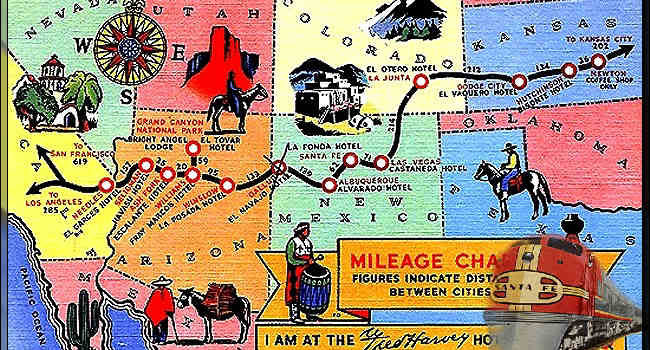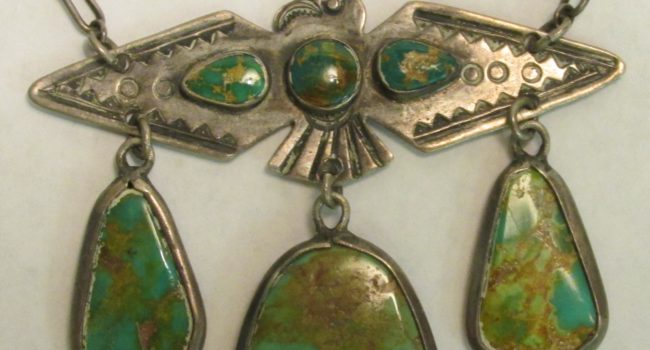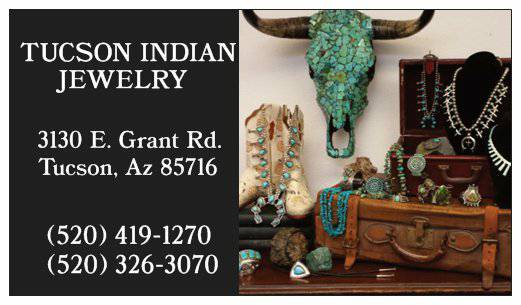First of all, Route 66 Indian Jewelry consists of thinly stamped silver and turquoise jewelry. As a result, this jewelry is for sale at curio shops and trading posts located along Route 66. Consequently, this jewelry is particularly popular during the golden age of travel from the 1930’s to the 1970’s. Hence, this jewelry is for tourists and “looked Indian.” Finally, you can recognize it with:
- cross arrows
- chaco dogs
- thunderbirds
- and other stamped designs includes the “whirling log” (which is later discontinued because it resembles a swastika).
Birds, Dogs, and Whirling Logs!
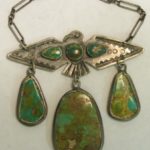
Especially relevant is this fabulous 1930’s Fred Harvey / Route 66 style necklace pendant. As a result, this piece features distinct silversmith techniques and features natural turquoise stone! In conclusion, see more examples of Route 66 Indian Jewelry, click ⇒HERE⇐
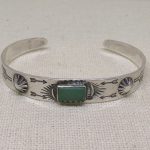
Arrow bracelet with stamp work and high grade turquoise center stone.
Fred Harvey style silversmithing was first started in the Southwest in the early 20th century. As a result, with the influx of tourists at this time, the demand for Native American Indian jewelry is higher than the supply. Hence, Hotel entrepreneurs like Fred Harvey opens gift shops within their hotels to carry “Indian Jewelry”.
In conclusion, we offer a huge selection of vintage Route 66 Indian jewelry for sale by multiple dealers.

Welcome to the American Antique Mall – home of Route 66 Indian Jewelry
Most relevant, this jewelry is available at the American Antique Mall in Tucson, Arizona
Also, the American Antique Mall is the turquoise and coral striped building
In addition, our address is: 3130 E. Grant Road (at Country Club), Tucson, Arizona, 85716
Furthermore, our phone number is: 520-326-3070
Finally, our other website is: www.americanantiquemall.com
Route 66 Indian Jewelry 1993-2021 © Schannep Ventures L.L.C. ALL RIGHTS RESERVED

